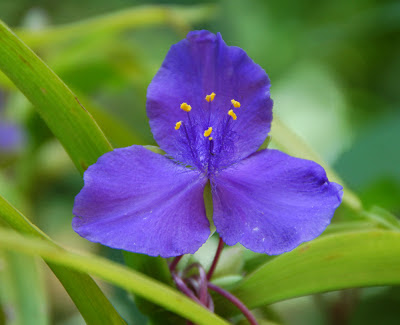It's been National Pollinator Week and I've had fun participating in garden tours, attending talks, and will do a program tomorrow about native plants for pollinators -- great fun for an excellent initiative.
I started gardening for butterflies three decades ago, but rapidly expanded my interest to native bees, and other flower insects. I never studied entomology, unfortunately, but my best friend in graduate school as well my hubby (whom I also met in graduate school) studied pollination biology, so I was at least aware of the field!
But as a gardener and educator, it's been a joy to encourage people to include plants that "work for a living" and this includes pollinator-friendly plants of all sorts. From adding nectar- and pollen-rich flowers to providing habitat for nesting and larval food sources -- we can easily support pollinators in our landscapes.
I've posted a pdf of the presentation on the sidebar. Just click on the image to view it.
I'm glad I'll have the opportunity to plug pollinator habitat as part of pollinator week!
(The presentation is at a great local native plant garden, the Botanical Gardens at Asheville and is in support of the Pollination Celebration organized by Bee City USA.

























.jpg)
